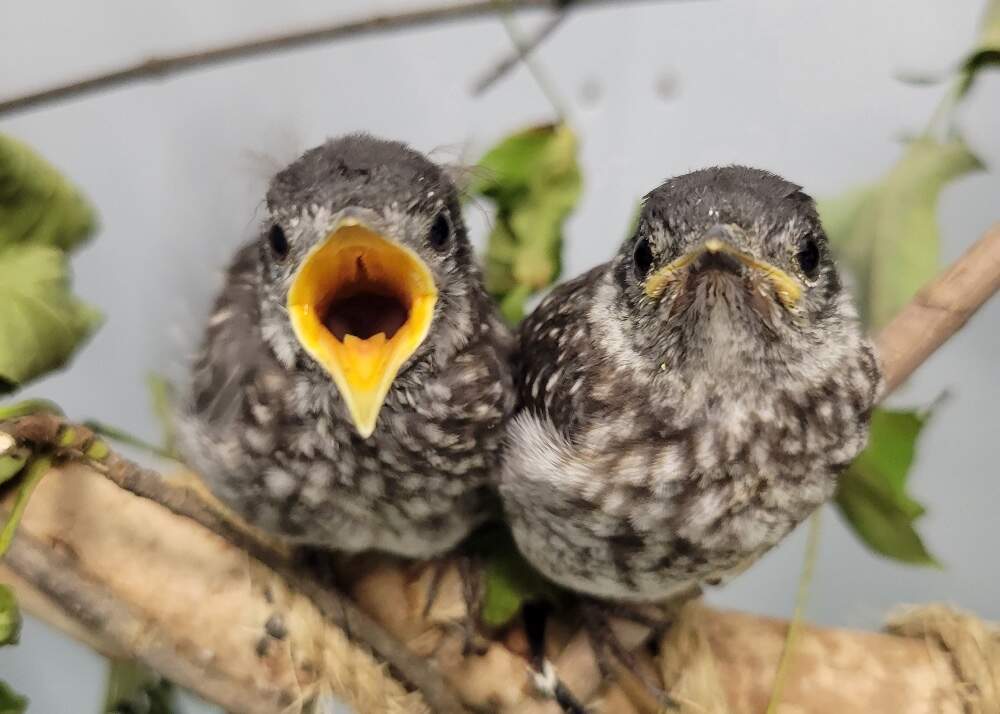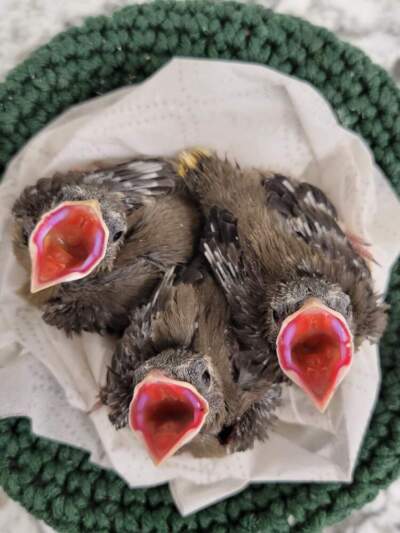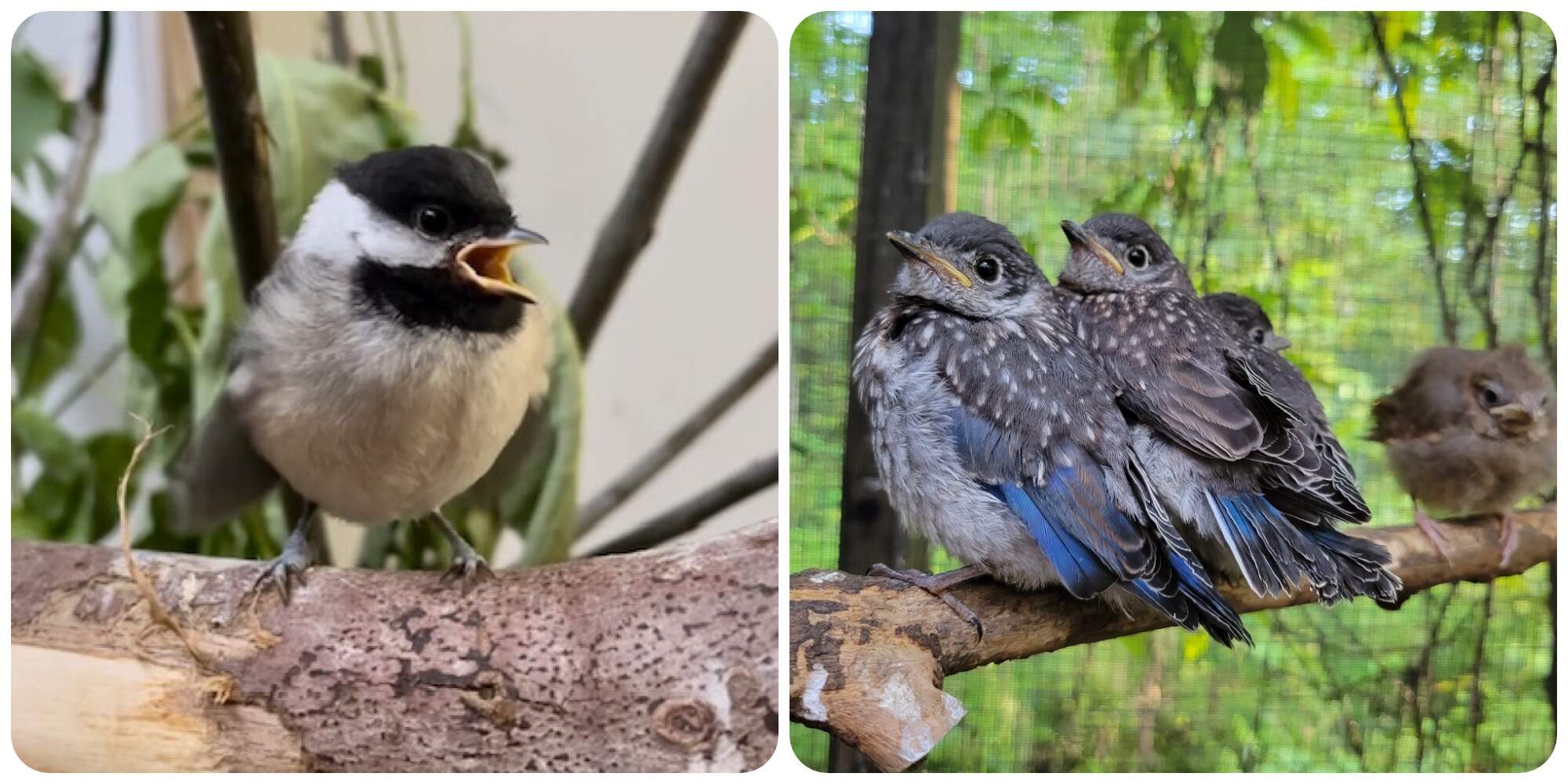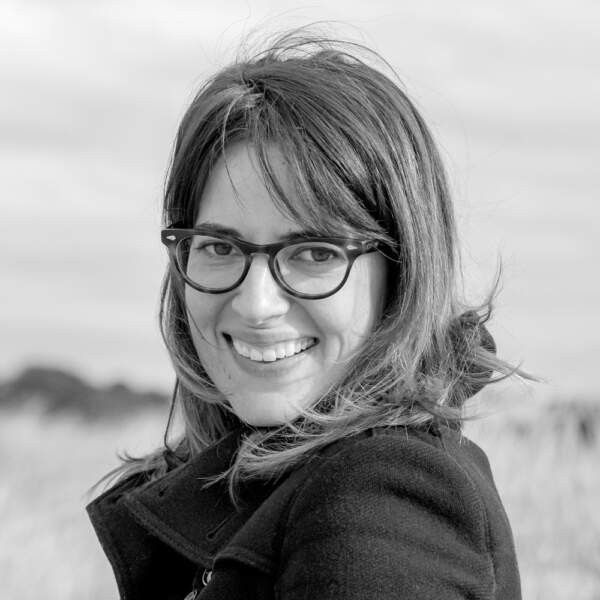Advertisement
Commentary
‘It felt like I was holding the sun’: The gift of baby birds

“Try not to talk to the birds,” a wildlife rehabilitator said. Impossible, I thought, opening an incubator door. Inside, there were several baby American robins, huddled together in a nest made from a sour cream container and a knitted cozy. They craned their necks toward me and waved their heads back and forth as if to say: Feed me, lady.
This past summer, new songbirds arrived every week at the Vermont Institute of Natural Science, where an incredible team at the Center for Wild Bird Rehabilitation nursed them back to health. I volunteered there as a baby bird feeder, though I was the furthest thing from a birder when I began in June. I didn’t yet know that goldfinches change color at different times of year, that cardinals often mate for life or that Eastern phoebes, like the ones who nested on our porch this year, can raise two broods in a summer.
I spent my late 30s and early 40s trying to become a mother myself. I tried everything: fertility treatments, acupuncture, magical candles. Navigating the process felt as impossible as a baby bird trying to survive in the wild without its mother. Feeding the birds seemed like the perfect arrangement. It gave me the opportunity to role play while waiting for my luck to change.

Most of the birds were orphans, their mothers killed by cars or window strikes. Sometimes, the babies fell out of the nest or suffered injuries from cat attacks. They were cute, but we couldn’t keep them. It was our job to help them become independent, to teach them how to live in the wild. And talking to baby birds can cause problems, especially with impressionable blue jays who are susceptible to imprinting.
Using tweezers, I slid microscopic-sized pieces of grape, wet kitten food and egg deep into their mouths until the birds closed their eyes and fell asleep into a food coma. If they didn’t gape for me, sometimes I whistled to get their attention or tapped on the incubator door, the vibration mimicking the sensation of its mother landing on the nest. What surprised me the most was how much taking care of the birds actually felt like motherhood, the avian version. I changed nests instead of diapers and wiped bird poop off my clothes instead of spit-up. At the end of my shift, my feet ached from running around, and all I wanted was a little “me time.”
Despite their circumstances, the birds found plenty of opportunities to be playful. Northern flickers flew onto my shoulders and pecked at my sparkly earrings. A downy woodpecker sneaked out of his box and landed on my head, perching there as if he were a polka-dot fascinator headpiece. I took their lead and tried to find ways to make the cold, depersonalization of fertility treatment more enjoyable, whether it was stopping off for a grilled cheese sandwich at Red Hen Baking Co. or bird-watching along the highway, where hawks perched on the branches of white pine trees patiently awaited their own lunch.
While I began volunteering as a way to help pass the time, I knew I was becoming a birder when running out of suet felt like a reason to call 911. I panicked if my binoculars weren’t on my desk to catch a glimpse of a broad-winged hawk doing a fly-by with a snack in its mouth. After Vermont’s torrential rainstorms, I showed up at a neighbor’s house with tweezers and soaked mealworms because she needed help with a baby robin that fell from its nest. She couldn’t get him to eat, but he popped open his mouth as soon as I whistled at him.
“You’ve got the magic touch,” she said.

Songbirds always seemed so fragile. Surprising, then, how quickly they healed once they got what they needed at the rehabilitation center. I’d show up for my shift the following week, and my favorites would be back out in the world living their best life: the male cardinal who always seemed to be having a bad hair day, the brave black-capped chickadee who liked to catch rides on my sneakers, the enthusiastic chipping sparrow who waved his wings like a windup toy at the sight of my tweezers.
It surprised me to learn that birds are usually released back into the wild close to where they were initially found. I didn't understand why a rehabilitator would want to re-introduce a bird to the place where it was injured, but doing so increases the likelihood of survival. A bird is more likely to recognize its surroundings and stands a better chance of finding food, shelter and, hopefully, family.
The first time I had the chance to witness a bird release, I had expected it to look like all the slow-motion videos I had seen online, of raptors soaring majestically out of boxes. But in real-time, the songbirds flew out of the container so fast that I wasn’t even able to identify the species.
It reminded me of when my own mother released me into the wild and dropped me off at college for my freshman year. She hugged me good-bye and walked out of my dorm room like it was nothing. Later, I mentioned how surprised I was that she didn’t cry.
“I waited until I got to the car,” she said.
Songbirds always seemed so fragile. Surprising, then, how quickly they healed once they got what they needed at the rehabilitation center.
New arrivals at the rehab center like Carolina wrens, chimney swifts and cedar waxwings softened sad goodbyes. Every day was like living inside the pages of the “Peterson Field Guide.” Halfway through the summer, someone dropped off a yellow warbler that had been hit by a car. I had never seen one up close before. A rehabilitator placed the bird on our operating table and asked if I could hold him while she wrapped its injured leg. She positioned my hands around the bird just where she wanted them.
“Is he in pain?” I asked.
She softly draped a washcloth over his head to help him relax and explained that sometimes birds don’t want to let on that they’re hurt. It’s instinctual; they fear a predator might sense their weakness. I often felt that way during fertility treatment, hesitant to talk about what I was going through, but that experience is starting to feel far away now.
After multiple rounds of IVF, my partner and I agreed to stop trying for the time being. Although the pain of fertility treatment is largely invisible, the toll it took on my body and my emotions was unlike anything I had ever experienced.
All my life I’ve had to release my expectations around motherhood. My mother died when I was a junior in college. I thought maybe having children of my own would help fill the void, but that doesn’t seem to be in my future. What surprises me more than anything about working with the songbirds is how much taking care of them fulfills my need to be a mom. Helping them manage their pain has made it much easier to manage mine.
I had expected the yellow warbler to try and fly out of my hands, but to my surprise, he didn’t. I stayed as still as possible, marveling at his exquisite golden color, the intricate markings on his tail. His chest expanded when he breathed in and shrank when he breathed out. It felt like I was holding the sun.
